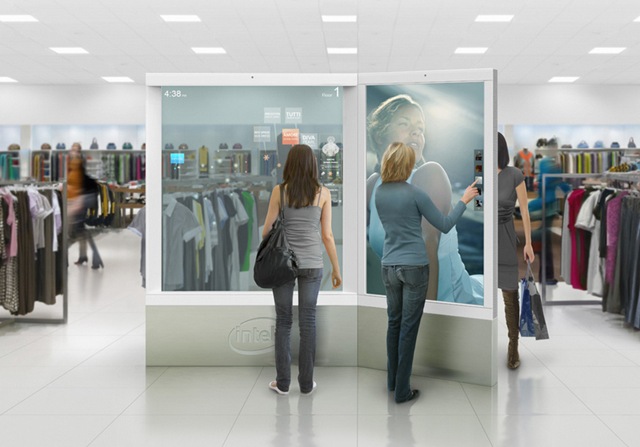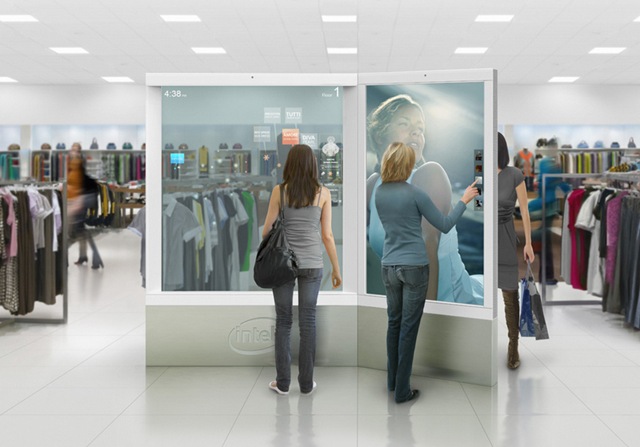1 min read
Bringing Analytics in Design: 7 Novel Ways of Using Big Data in Fashion
There is no doubt in the buzz big data has generated in the business. Big data analytics has revolutionized the decision making and changed...


The fashion world is and has forever been an aggressive field. Designers need to be two levels ahead of the fashion curve and set the tone for iconic designs.
With innovation, we can make a more powerful, vigorous, manageable, and transparent fashion ecosystem system rather than an energy draining treadmill with miscommunication, vulnerability, misalignment, and confusion.
For this purpose, now Fashion Tech is turning into a quickly developing and energetic ecosystem that’s presently established by accelerators and incubators, for example, Silicon Valley's Fashion Tech Accelerator and New York Fashion Tech Lab whose target is to direct new fashion front-runners.
Brands, like Nike, Adidas, Burberry, and Levi's are implementing AI in everything from personalized running shoes to chatbots helping the shoppers.
From 3D avatars to closet consultants, Artificial Intelligence is molding the manner in which we get dressed.
Let's know how.
The first cooperation with the design decisions is the visuals. The decision depends on the look, color, and cut of the material of apparel we’re interested in. Looking at this logically, mostly no fashion decision is made without a visual guide.
While the visuals of a clothing are useful, it is extremely difficult to disclose to a machine what sort of piece of clothing look we have at the top of our mind. To have your mind fixed on a particular sort of dress and afterward continue looking through the indexes to discover it is tiresome. However, this is anyhow changing, all thanks to Artificial Intelligence.
Artificial intelligence is floating towards helping buyers envision their thoughts. Be it giving an image or putting in the shade of an item, it'll go like a reverse image search.
For instance, in case that you have a geometric patterned dress in your mind that your friend had worn a day or two ago, AI can enable you to locate it. You can click a photo of your friend, upload it on a fashion site, and the AI algorithms will give you the equivalent or comparable items.
Brands like Nordstrom and Asos are as of now trying different things with this innovation on their present sites.
The expenses of beginning a fashion company have gone down fundamentally, because of e-commerce and technology.
The beginning of Etsy made it simple for anybody to begin an online shop and create a following. Presently, diminished manufacturing costs make it achievable for startups or emerging brands to produce the little runs of items at inexpensive terms and develop online visitors from that point.
In years before, fashion business would need to produce tons of products with the end goal to create them at a sensible cost.
NYC-based menswear brand Noah, for instance, manufactures ultra-little bunch apparel lines — supposed to certain times be as meager as 12 or 24 products — and frequently offer out of these products rapidly. The releases incorporate detailed blog entries about the products' purpose and sourcing.
A few brands are "disguising" production to revive the pace of manufacturing and take care of customer demand all the more quickly.
Gucci, for instance, plans to release a 35,000-square-foot Gucci Art Lab in Italy that will have some expertise in manufacturing leather merchandise and shoes. The venture's goal is to carry the Gucci supply chain nearer to home — at last, offering the brand more noteworthy authority over goods development, examining, and material improvement.
Further, brands are investigating how 3D printing can enable them to deliver merchandise on-demand and make new roads for personalization.
To offer tech-savvy fashion enthusiast and new generation a personal designer affair, the Hook at Intelligence Node made the principal AI-generated fashion feed for customers. Hook learns what a customer prefers in a real-time just by investigating which item pictures the individual has loved or included in their online Wishlist, so customers can quickly discover things they cherish. The application sends customers ongoing price drop notifications on their liked products or Wishlist.
Hook supports buyers to shop like a modern designer by increasing extraordinary search capacity to locate a particular product they need with a sole view of the product over brands so they can analyze costs and get the best offer.
With social networking applications, communication applications, and digital wallets apparent the mobile has affected our regular day to day lives as well as currently pressing its way into the business world.
This period of the network has presented a sleeker type of shopping through mobile business. Furnished with the smartphones, now not exclusively would we be able to shop on the internet, however, get simple payment service with digital wallet choices, for example, Android Pay and Apple. It is even studied that a majority of people like to shop online as opposed to going to a physical store.
This fresher technique for shopping makes purchasing at one click – a simple encounter. Take for instance Instagram's shopping feature as presently users can enjoy a consistent mobile-friendly shopping background by tapping on the product they like and be diverted to the item page – viably diminishing search time.
Brands can give their consumers a straightforward method to find items and shop, all through their handy cell phones.
Tommy Hilfiger's latest association with IBM and FIT is a little way forward towards fashion world that wires AI tech into the design procedure. While it's a foremost move in the conventional contemporary and luxury designer fields, which can be graduate to embrace new innovation, it's still going on in a lot fuller power.
Also, Stitch Fix, which was based on the pervasive thought that data science could enhance retail, has made progress in AI that most brands haven't yet touched. It's additionally not structuring algorithm-based fashion with the objective to set trends— a remarkable reverse. The Hybrid Designs are intended to mix in with the stock from the other 500 brands Stitch Fix operates with. In any case, the fundamental value of AI stays - Set the machine in work so people are freed up to accomplish more creative undertakings.
Big data tools enable retailers to keep up a competitive pricing plan, connecting machine learning and AI. Retailers incorporate this API into a brand's information, so there is a principles-based engine that keeps costs upgraded, contingent upon ongoing external elements like discounts, stock, and contenders' out-of-stock circumstances. This incorporation enables retailers to improve their cost and, for example, guarantee they generally offer a particular SKU 10% less expensive than Amazon.
While many would argue that the fashion business is a conventional industry on a fundamental level, Artificial Intelligence is owning the keys to ultimate brand control, and this can't be overlooked. As the innovation keeps on improving agility alongside the best line execution and customer support while bringing down costs, it appears that the fashion industry and AI are an ideal fit.
From design to manufacturing to business analysis, all tasks in the fashion business will evolve as a few undertakings are automated using AI and robotic technology. The big test is the way to ensure everybody in the fashion industry can profit by these changes.
Looking for an AI implementation for your business? Get in touch.

1 min read
There is no doubt in the buzz big data has generated in the business. Big data analytics has revolutionized the decision making and changed...

In the modern world, technology advancement has to be the major point. Over the last two decades, the digital era has seen many ups and downs in the...

Are you part of the eCommerce revolution? If yes, then you must be well aware of the rapid growth of the eCommerce industry, with every online seller...